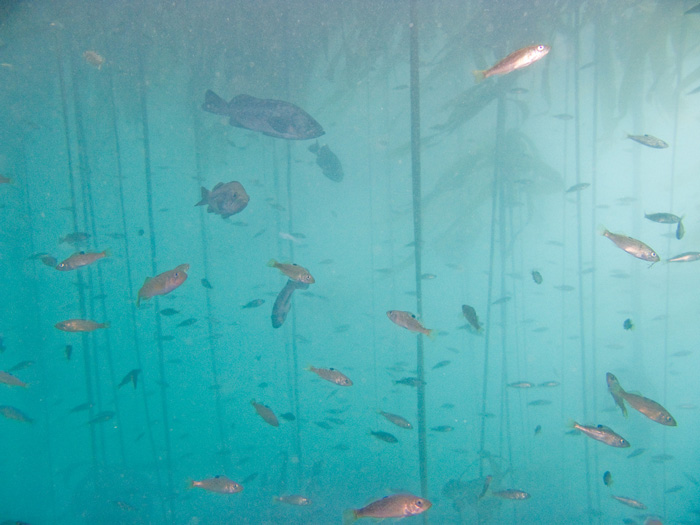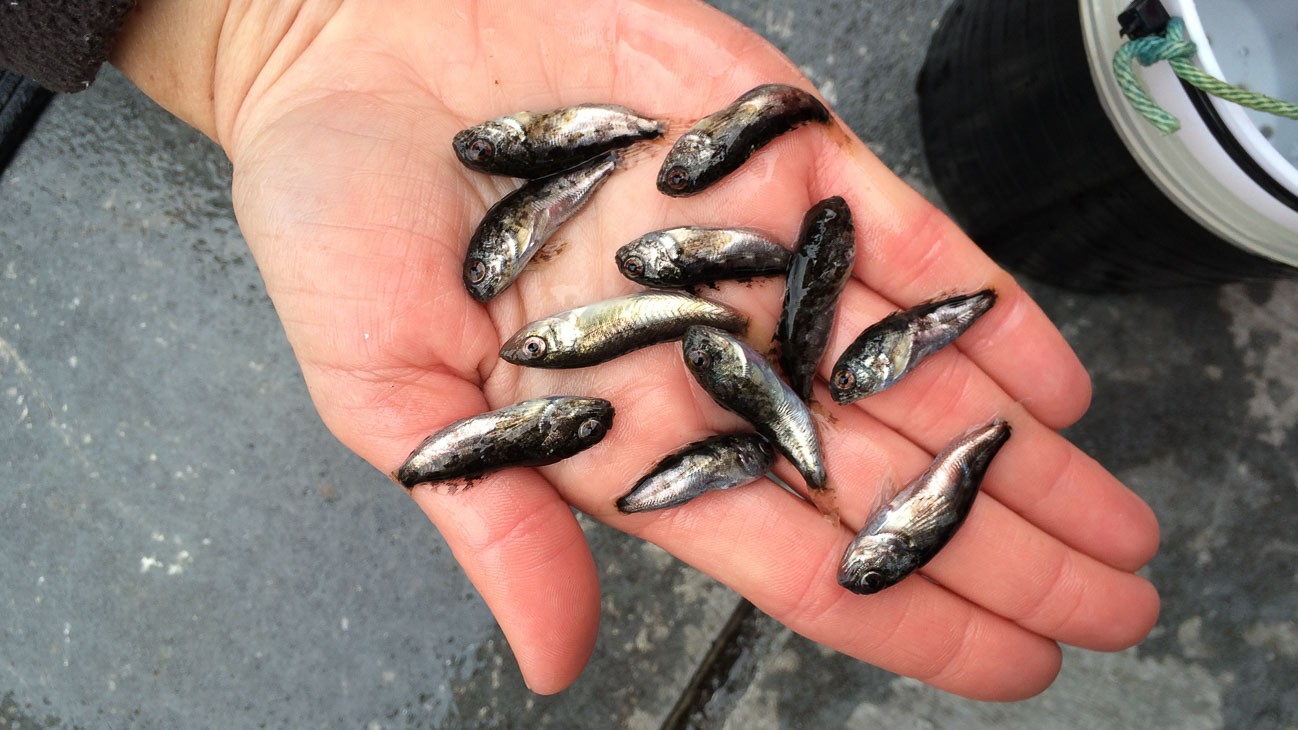As ODFW Marine Reserves Program researchers pulled up their latest collection of juvenile fish samples at Redfish Rocks Marine Reserve last Thursday, they received a huge surprise — a record breaking pulse of juvenile splitnose rockfish.
Like many rockfish species found off Oregon’s coast, splitnose are long lived (up to 103 years old!). They are caught in commercial fisheries in deeper waters, along the continental shelf and slope. Splitnose rockfish are of particular interest to the Marine Reserves team because they have a unique start to their lives. Their young recruit to shallower, nearshore waters such as in the Redfish Rocks Marine Reserve and school up around kelp—which is where the Marine Reserves team found them hanging out last Thursday.

Nearshore waters contain valuable nursery grounds important to many fish species, such as splitnose rockfish. As they grow, these young fish will move offshore into deeper waters. However, there are a lot of unknowns about when this happens.
Daniel Ottmann is an Oregon State University (OSU) graduate student who is trying to help answer that question. He is working with Drs. Su Sponagule and Kirsten Grorud-Colvert from OSU, and in collaboration with ODFW’s Marine Reserves Ecological Research Team, to research young rockfish.
“We are looking at when and where juvenile rockfish are recruiting on the coast,” explains Ottmann. “Little is known about what happens between the open oceans and when they recruit to a specific place.” For example, a marine reserve or a rocky reef.
One of the big questions that Ottman and the Marine Reserves team is trying to answer is—do juvenile rockfish disperse widely, or do they tend to stay together, or stay in one place? This is where genetics comes in handy—which is what Ottman is working on. “We are trying to find genetic siblings to see if they are staying together, until they are collected in our samples,” says Ottman.
So, why is it important to understand if young rockfish stay together? Because it is important to consider protecting areas that tend to receive high abundances of young rockfish, as well as areas where fish may spawn. Dr. Brittany Huntington of the Marine Reserves team explains, “If we understand source and sink dynamics at the larval scale we’d understand if we’ve placed reserves in areas that might benefit from those spatial dynamics. For example, it might be a good idea to place a reserve in a source, such as a spawning location.”
Understanding where spawning areas and nursery grounds occur is important for determining how to best sustain fish populations for years to come.
